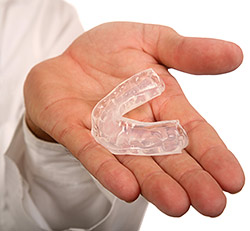Common Procedures
Topics on this page

Regular Exams and Cleanings
Regular exams are an esssential part of maintaining your child’s oral health. During your child's regular exam, we will:
- Check for any problems that may not be seen or felt
- Look for cavities or other signs of tooth decay
- Inspect the teeth and gums for gingivitis and signs of periodontal disease
- Perform a thorough teeth cleaning
Your little one’s exam will take about 45 minutes. Each regular exam includes a detailed teeth cleaning, during which we will clean, polish, and rinse the teeth to remove any tartar and plaque that have built up on the tooth’s surface.
Visiting our office every six months gives you the chance to ask our doctors any questions you may have about your son or daughter’s oral health. Regular exams are offered by appointment only, so please contact our practice today to schedule your child’s next exam and cleaning.
Stainless-Steel Crowns

When a composite filling material cannot be used because the cavity has affected so much of the tooth structure, we will use a stainless-steel crown. The crown covers the baby back teeth with silver caps to restore it to its original size and shape.
To prevent the crown from becoming red, swollen, or irritated with plaque buildup, please be mindful with home care. Please remember the 2x2x2 rule; brush twice a day for 2 minutes and visit the dentist twice a year! In addition, please try to maintain a healthy, nutrient-rich diet.
Tooth-Colored Crowns
In some cases, the front teeth become severely decayed. In these cases, a tooth must be restored with a crown. Alexandria Children’s Dentistry offers cosmetic tooth-colored crowns. Our office does not place stainless-steel crowns on the front teeth.
Extractions
 There are times when it is necessary to remove a tooth. Sometimes a baby tooth has misshapen or long roots that prevent it from falling out as it should, and the tooth must be removed to make way for the permanent tooth to erupt.
There are times when it is necessary to remove a tooth. Sometimes a baby tooth has misshapen or long roots that prevent it from falling out as it should, and the tooth must be removed to make way for the permanent tooth to erupt.
At other times, a tooth may have so much decay that it puts the surrounding teeth at risk, so the doctor may recommend its removal. Infection, orthodontic correction, or problems with a wisdom tooth can also require removal of a tooth.
When it is determined that a tooth needs to be removed, a dentist may extract it during a regular checkup or request another visit for this procedure. The root of each tooth is encased within the jawbone in a “tooth socket,” and the tooth is held in that socket by a ligament.
In order to extract a tooth, the dentist must expand the socket and separate the tooth from the ligament that holds it in place. Although this procedure is typically very quick, it is worthwhile to share with us any concerns or preferences for sedation.
Tooth-Colored Fillings

Alexandria Children’s Dentistry uses tooth-colored composite material to restore small and moderate-sized cavities, fractured teeth due to trauma, and certain other situations diagnosed by Dr. Angela. Composite material is mercury-free, durable, and aesthetic.
Fluoride
 Fluoride is effective in preventing cavities and tooth decay, and in preventing plaque from building up and hardening on the tooth’s surface. A fluoride treatment in our office takes just a few minutes.
Fluoride is effective in preventing cavities and tooth decay, and in preventing plaque from building up and hardening on the tooth’s surface. A fluoride treatment in our office takes just a few minutes.
After the treatment, your child may be asked not to rinse, eat, or drink for at least 30 minutes in order to allow the teeth to absorb the fluoride. Depending on your youngster’s oral health or the doctor’s recommendation, a fluoride treatment may be required every three, six, or 12 months.
Mouthguards

Whether your child wears braces or not, protecting his or her smile during sports is essential. Mouthguards help protect the teeth and gums from injury. If your child participates in any kind of full-contact sport, the American Dental Association recommends that he or she wear a mouthguard. Choosing the right mouthguard is essential.
There are three basic types of mouthguards: the pre-made mouthguard, the “boil-and-bite” fitted mouthguard, and a custom-made mouthguard from the dentist. When you choose a mouthguard, be sure to pick one that is tear-resistant, comfortable and well-fitted for the mouth, easy to keep clean, and does not prevent your child from breathing properly. We can show your little athlete how to wear a mouthguard properly and how to choose the right one to protect his or her smile.
Our office offers custom mouthguards through Gladiator custom mouthguards (the same company Lebron James uses!). Please contact our office for more information on these custom mouthguards.
Nightguards
 If your child often wakes up with jaw pain, earaches, or headaches, or you see your little one clenching or grinding his or her teeth, he or she may have a common condition called “bruxism.” Many people do not even know they grind their teeth, because it often occurs when we are asleep. If not corrected, bruxism can lead to broken teeth, cracked teeth, or even tooth loss.
If your child often wakes up with jaw pain, earaches, or headaches, or you see your little one clenching or grinding his or her teeth, he or she may have a common condition called “bruxism.” Many people do not even know they grind their teeth, because it often occurs when we are asleep. If not corrected, bruxism can lead to broken teeth, cracked teeth, or even tooth loss.
There is an easy, non-invasive treatment for bruxism. Nightguards are an easy way to prevent the wear and damage that teeth-grinding causes over time. Custom-made by our office from soft material to fit the teeth, a nightguard is inserted over your child’s top or bottom arch to prevent contact with the opposing teeth.
Sealants

Sealants protect the grooved and pitted surfaces of the teeth, especially the chewing surfaces of back teeth where most cavities in children are found. Made of clear or shaded plastic, sealants are applied to the teeth to help keep them cavity-free. Research has proven that sealants reduce cavities on the chewing surfaces of permanent teeth by 80%.
Even if your child brushes or flosses carefully, it is difficult — sometimes impossible — to clean the tiny grooves and pits on certain teeth. Sealants work by filling in the crevices and grooves on the chewing surfaces of the teeth.
This shuts out food particles and harmful bacteria that can get caught in the teeth, and cause cavities. The application is fast and comfortable and can protect teeth effectively for many years. Dr. Angela will check the sealants during routine dental visits and recommend re-application or repair when necessary.
Sealants are only one step in a preventive dental routine. Brushing, flossing, and regular dental visits are still essential for a bright and healthy smile.



